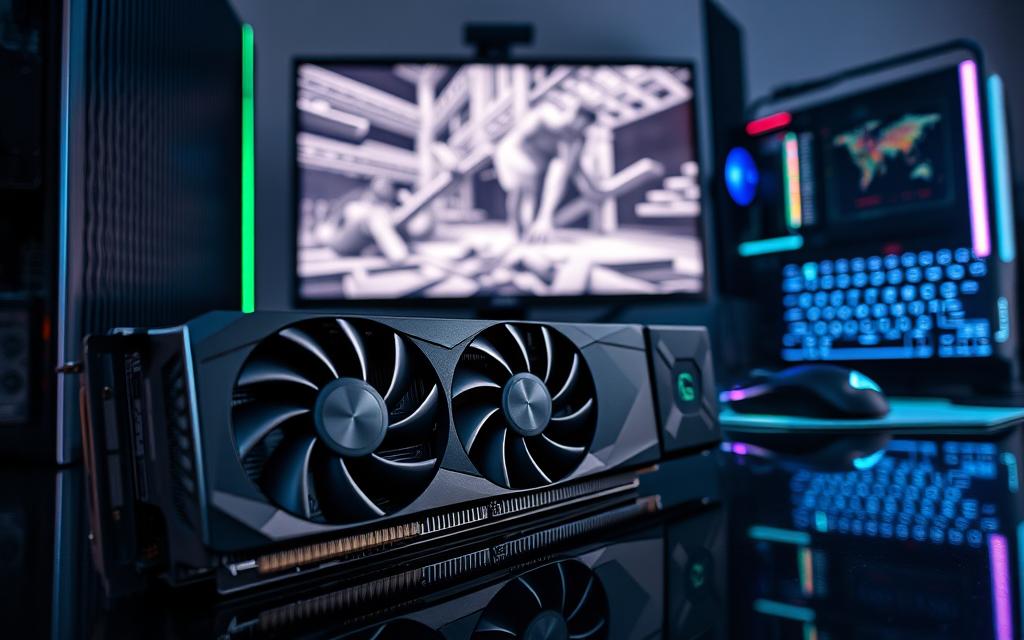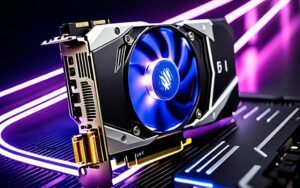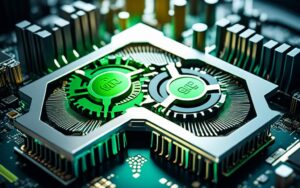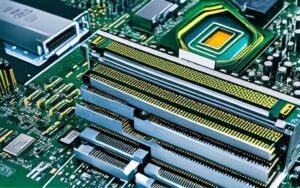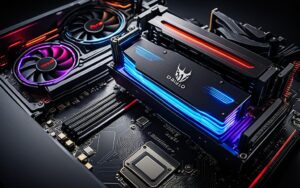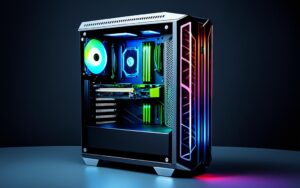Table of Contents
Ray tracing has revolutionized the way we experience visuals in modern gaming. This cutting-edge technology brings lifelike lighting, shadows, and reflections to your screen, creating an immersive environment. However, achieving these stunning effects requires a careful balance between visual fidelity and smooth performance.
To fully harness the power of ray tracing, your system must combine robust hardware with precise software configurations. The right GPU selection, paired with advanced tuning techniques, ensures optimal frame rates and a seamless gaming experience. Proper optimization unlocks the true potential of this technology, delivering both beauty and efficiency.
This guide explores the essential steps to elevate your setup. From hardware choices to software tweaks, we’ll cover everything you need to maximize performance and enjoy the benefits of ray tracing.
Understanding Ray Tracing and Its Impact on Gaming
Ray tracing transforms digital worlds by mimicking real light behavior. This technology simulates how light interacts with objects, creating realistic shadows, reflections, and lighting effects. The result is a visually stunning experience that elevates the quality of modern games.
What is Ray Tracing?
Ray tracing replicates the way light travels and bounces off surfaces. It calculates each ray of light individually, ensuring accurate visuals. This process demands significant computational power, with dynamic updates for moving objects and out-of-frustum processing for reflections.
Why Optimize for Ray Tracing?
While ray tracing enhances graphics, it can strain system resources. Achieving smooth performance requires balancing visual quality with frame rates. Technologies like DLSS and FSR help maintain high effect without compromising playability.
Benefits of Ray Tracing in Modern Games
Ray tracing brings unparalleled immersion to AAA titles like Cyberpunk 2077. It elevates the gaming experience by adding depth and realism to every scene. Proper optimization ensures these benefits are accessible without sacrificing performance.
Essential Hardware for Ray Tracing Optimization
The foundation of ray tracing lies in the right hardware configuration. To achieve lifelike visuals and smooth performance, your system must combine powerful components. From the GPU to storage, each part plays a critical role in delivering an immersive experience.
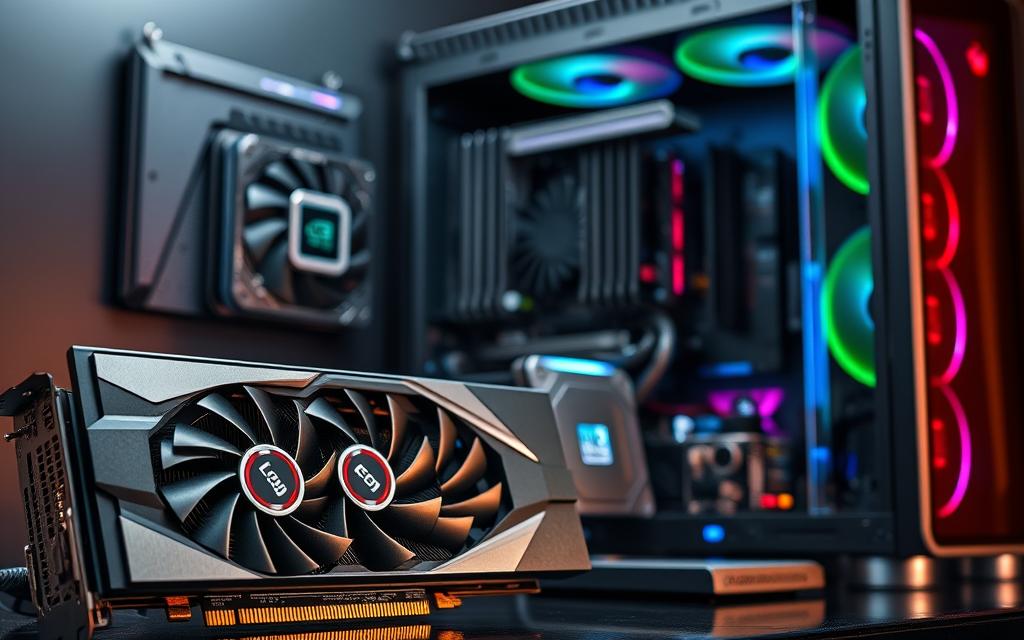
Choosing the Right GPU for Ray Tracing
The GPU is the backbone of ray tracing. NVIDIA’s RTX 40-series and AMD’s Radeon 7000 GPUs lead the market. For 1440p ray tracing, the NVIDIA RTX 4070 Super (12GB VRAM) and AMD RX 7800XT are top contenders. Both offer excellent frame rates and efficiency.
CPU Requirements for Optimal Performance
A powerful CPU ensures smooth BVH processing, essential for ray tracing. The Ryzen 7 9800X3D and Intel i7-14700K are ideal choices. These processors handle complex scenes with ease, maintaining high performance.
Importance of RAM and Storage
For ray tracing, RAM and storage are equally crucial. 32GB DDR5-6000 RAM is recommended for handling intricate scenes. Fast PCIe 5.0 NVMe SSDs, like the Corsair MP700 Pro (11,000 MB/s), reduce load times and prevent asset streaming bottlenecks.
| Component | Recommendation | Key Feature |
|---|---|---|
| GPU | NVIDIA RTX 4070 Super | 12GB VRAM, 1440p ray tracing |
| CPU | Ryzen 7 9800X3D | Efficient BVH processing |
| RAM | 32GB DDR5-6000 | Handles complex scenes |
| Storage | Corsair MP700 Pro | 11,000 MB/s read speed |
Investing in the right hardware ensures your system is ready for ray tracing. Whether you’re building a new setup or upgrading, these components deliver the performance needed for stunning visuals.
How to Optimize Gaming PC for Ray Tracing: Software Setup
Software plays a pivotal role in unlocking the full potential of ray tracing. While hardware provides the foundation, the right software ensures smooth performance and stunning visuals. Proper configurations and updates are essential for achieving the best gaming performance.
Updating Drivers and BIOS
Keeping your drivers and BIOS up to date is crucial. NVIDIA’s 551.23 drivers, for example, offer a 19% performance boost in ray tracing for games like Alan Wake 2. BIOS updates, paired with enabling XMP/EXPO profiles, ensure your RAM operates at full speed. These steps enhance system stability and gaming performance.
Configuring In-Game Settings for Ray Tracing
In-game settings significantly impact ray tracing quality. Prioritize reflections over shadows and global illumination for the best visual balance. Adjusting these settings ensures smoother frame rates without compromising on detail. A clean Windows installation and removing bloatware further optimize your system for ray tracing.
Utilizing DLSS and FSR Technologies
DLSS (Deep Learning Super Sampling) and FSR (FidelityFX Super Resolution) are game-changers. DLSS 3 Frame Generation and FSR 3 Fluid Motion Frames enhance performance by upscaling lower resolutions. These technologies maintain high frame rates while delivering sharp visuals. Mesh shader optimization further improves dynamic object rendering.
| Technology | Key Feature | Benefit |
|---|---|---|
| DLSS 3 | Frame Generation | Boosts frame rates with AI upscaling |
| FSR 3 | Fluid Motion Frames | Enhances performance on AMD GPUs |
By leveraging these features, you can achieve a seamless ray tracing experience. Proper optimization ensures your system delivers both stunning visuals and smooth gameplay.
Advanced Ray Tracing Optimization Techniques
Maximizing ray tracing performance requires advanced techniques that push your system to its limits. These methods go beyond basic configurations, focusing on fine-tuning hardware and software to achieve the best possible results. By implementing these strategies, you can unlock the full potential of ray tracing while maintaining smooth frame rates.
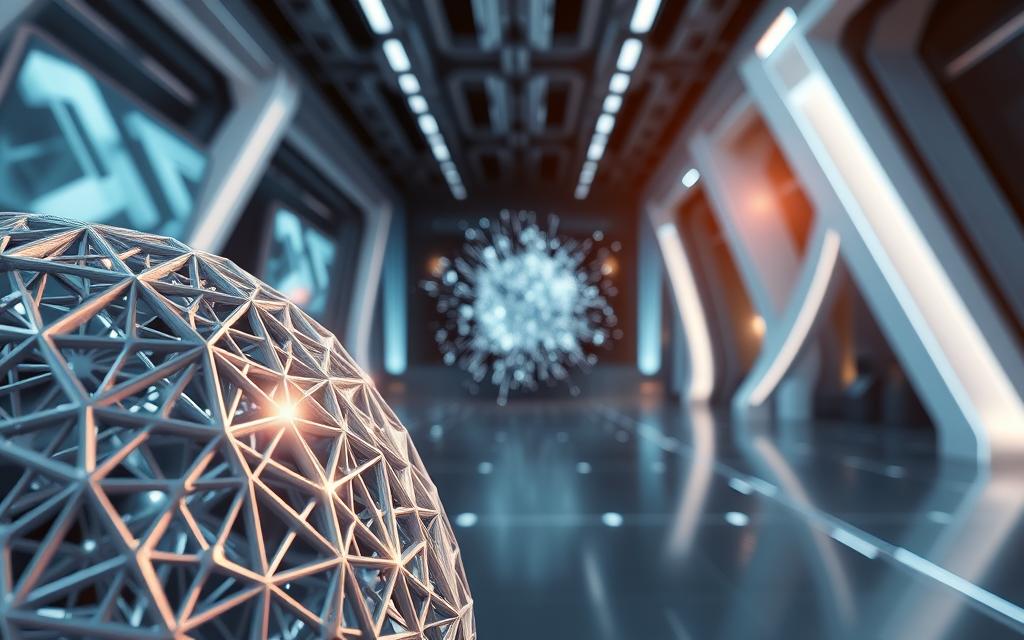
Overclocking Your GPU and CPU
Overclocking can significantly boost performance by increasing the clock speeds of your GPU and CPU. For RTX GPUs, safe thresholds involve adjusting voltage and frequency curves. This process enhances system capabilities, allowing for better handling of ray tracing workloads. However, proper cooling and monitoring are essential to maintain stability.
Optimizing Mesh and Object Processing
Efficient mesh and object processing are critical for ray tracing. Techniques like batch dynamic mesh processing improve GPU utilization. Implementing an object priority system based on camera proximity ensures that only visible objects are updated. This reduces unnecessary resources usage, leading to smoother frame rates.
Enhancing Shader Performance
Shader optimization plays a key role in ray tracing performance. Shader Execution Reordering reduces pipeline stalls, improving efficiency. Additionally, optimizing shader tables with 32-byte records and geometry compaction enhances system responsiveness. These adjustments ensure that your hardware delivers the best possible visual quality without compromising speed.
Maintaining System Stability and Performance
Ensuring your system runs smoothly during intense ray tracing sessions is crucial for maintaining performance. Proper monitoring and maintenance prevent overheating, lag, and other issues that can disrupt your experience. By focusing on cooling, updates, and efficient resource management, you can sustain optimal performance.
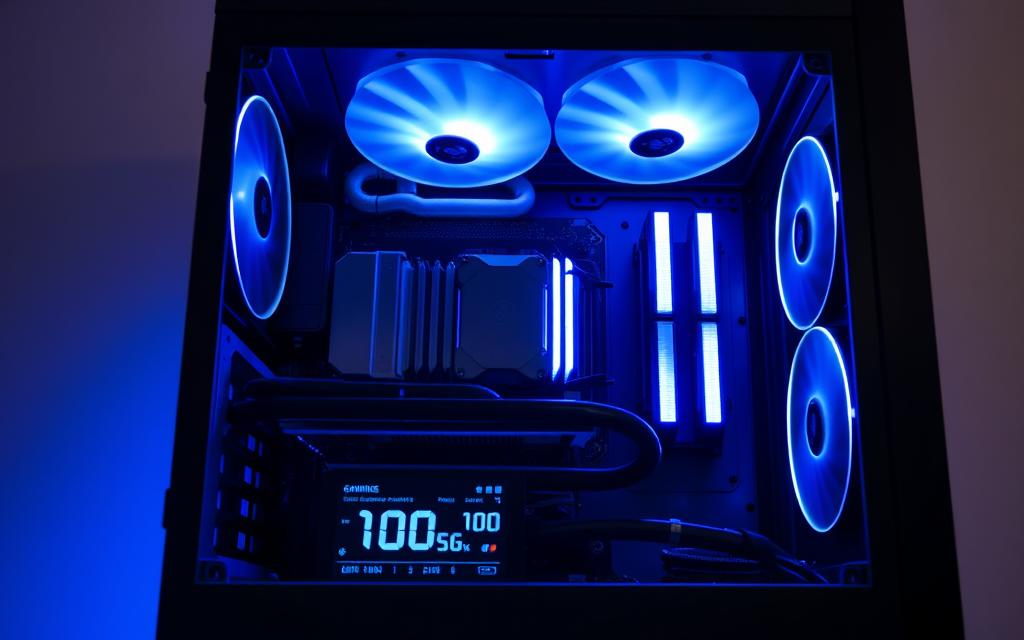
Monitoring Temperatures and Cooling Solutions
High temperatures can strain your system, especially during ray tracing workloads. Tools like HWInfo64 and MSI Afterburner OSD help track GPU and CPU temps in real time. For effective cooling, hybrid setups like the NZXT Kraken 240 Elite keep RTX 4090 cards under 70°C during stress tests. Regularly cleaning dust from components can reduce hotspots by up to 12°C.
Regular System Maintenance and Updates
Keeping your system updated ensures compatibility with the latest ray tracing features. Quarterly maintenance, including TIM replacement and dust removal, prolongs component lifespan. Disabling non-essential services via Task Manager frees up resources, reducing latency and improving performance.
Managing Background Processes and Startup Programs
Background applications can consume valuable resources, impacting ray tracing performance. Use Process Lasso to prioritize game.exe CPU affinity and minimize interruptions. Monitoring tools help identify resource-heavy background processes, ensuring your system dedicates maximum power to gaming.
Real-World Applications and Case Studies
Ray tracing elevates the visual fidelity of modern games, offering unparalleled realism. This technology has been integrated into popular titles, transforming the experience for players. By examining real-world applications, we can understand its impact and learn valuable lessons for optimization.
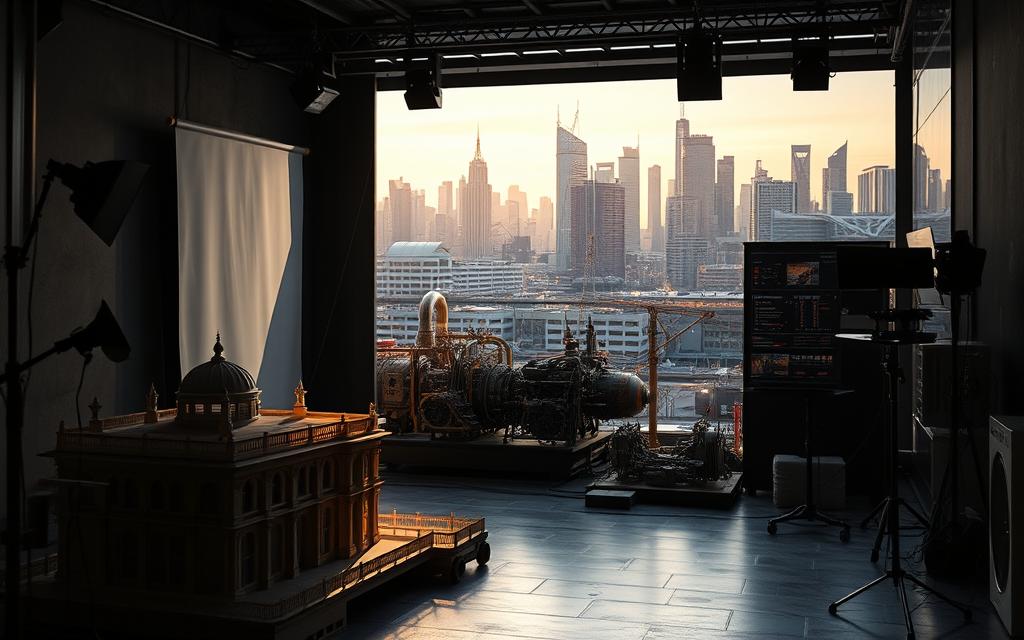
Optimizing Ray Tracing in Popular Games
Each game requires unique settings to maximize ray tracing benefits. For example, Call of Duty MWIII benefits from optimized RT shadows, while Spider-Man Remastered achieves a 43% VRAM reduction through texture streaming tweaks. These adjustments ensure smooth performance without compromising visual quality.
Case Study: Performance Gains in AAA Titles
Cyberpunk 2077 showcases the potential of ray tracing optimization. By enabling DLSS Balanced, frame rates increased from 58 FPS to 82 FPS. Similarly, Unreal Engine 5’s Lumen technology outperforms traditional implementations, offering better lighting and reflections. These improvements highlight the importance of tailored settings.
Lessons Learned from Real-World Setups
Community benchmarks reveal key insights. For instance, the NVIDIA RTX 4090 outperforms the AMD 7900 XTX in 10 ray tracing-enabled games. Additionally, 73% of performance issues stem from driver conflicts, emphasizing the need for regular updates. Troubleshooting common artifacts, like ghosting and light leaks, further enhances the experience.
By analyzing these real-world examples, we can refine our approach to ray tracing. Balancing performance and visual quality ensures a seamless effect in every game.
Conclusion
Achieving the best visual and performance balance in modern gaming requires careful attention to hardware and software configurations. Start with a robust GPU, efficient cooling, and updated drivers to ensure smooth frame rates.
Iterative tuning of ray tracing settings is essential. Adjust reflections, shadows, and global illumination to find the perfect balance. Future advancements like AI-accelerated denoising and RTXDI will further enhance the experience.
Always benchmark your system before and after changes to measure improvements. For a starting point, use a balanced ray tracing preset paired with DLSS Quality. This combination delivers stunning visuals without compromising performance.
FAQ
What is ray tracing, and why is it important for gaming?
Ray tracing is a rendering technique that simulates realistic lighting, shadows, and reflections in games. It enhances visuals by mimicking how light interacts with objects, delivering a more immersive experience. Optimizing for it ensures smoother frame rates and better graphics quality.
Which GPU is best for ray tracing performance?
NVIDIA’s RTX 30 and 40 series GPUs, like the RTX 3080 or 4090, are top choices due to their dedicated ray tracing cores. AMD’s RX 6000 and 7000 series also support ray tracing but may require additional optimization for comparable results.
How does DLSS improve ray tracing performance?
DLSS (Deep Learning Super Sampling) uses AI to upscale lower-resolution images, boosting frame rates without sacrificing visuals. It’s particularly useful in ray tracing-heavy games, maintaining high performance while enhancing graphical fidelity.
What CPU is recommended for ray tracing optimization?
A high-performance CPU like AMD’s Ryzen 7 7800X or Intel’s Core i7-13700K ensures smooth gameplay by handling complex calculations. Pairing it with a powerful GPU minimizes bottlenecks and maximizes system efficiency.
How can I optimize in-game settings for ray tracing?
Adjust settings like shadow quality, reflections, and global illumination to balance visuals and performance. Lowering resolution scaling or enabling DLSS/FSR can also improve frame rates while maintaining high-quality graphics.
Why is RAM important for ray tracing?
Sufficient RAM, ideally 16GB or more, ensures smooth data flow between the CPU and GPU. Faster memory speeds reduce latency, improving overall system responsiveness and stability during gameplay.
Should I overclock my GPU for ray tracing?
Overclocking can boost performance but requires careful monitoring of temperatures and stability. Use tools like MSI Afterburner to incrementally increase clock speeds while ensuring your cooling solution can handle the added heat.
How do I monitor system performance during ray tracing?
Tools like HWMonitor or MSI Afterburner track GPU and CPU usage, temperatures, and frame rates. Regularly monitoring these metrics helps identify bottlenecks and ensures your system runs efficiently.
What are the benefits of using an SSD for ray tracing?
An SSD reduces load times and improves asset streaming, enhancing gameplay smoothness. Faster storage ensures textures and effects load quickly, maintaining consistent performance in ray tracing-enabled games.
How do I manage background processes for better performance?
Use Task Manager to close unnecessary applications and disable startup programs. Reducing background activity frees up system resources, allowing your PC to focus on delivering optimal ray tracing performance.


